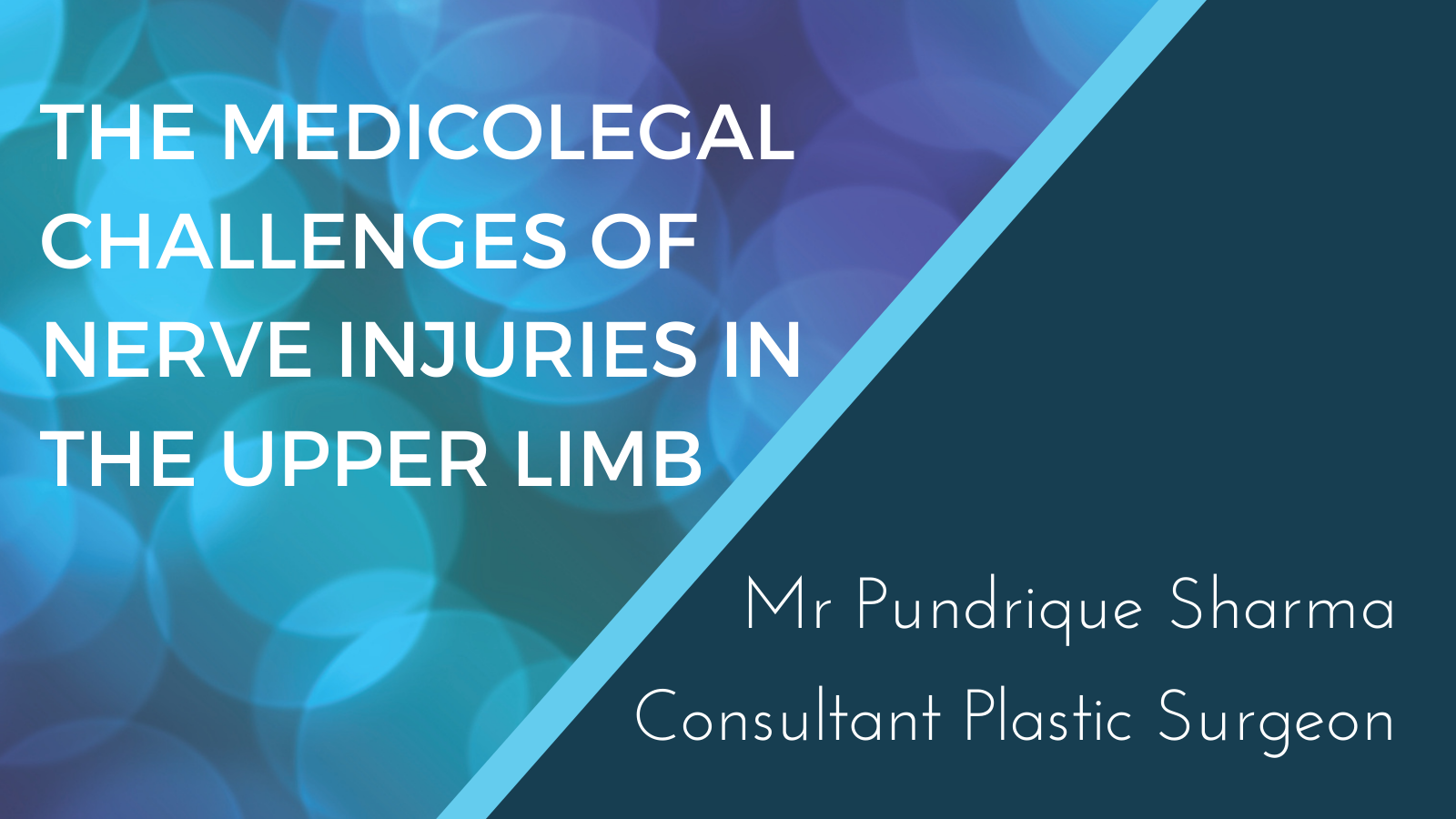The Medicolegal Challenges of Nerve Injuries in the Upper Limb

The nervous system comprises a network of nerves and nerve cells that carry messages between the brain and spinal cord and other parts of the body through a series of chemical and electrical changes. Nerves, which are made up of bundles of fibres, may be classified into one of three types: motor, sensory or a combination of both of these. Motor nerves control movement or allow an action to occur, such as the involuntary contractions that allow food to move through the gut. Sensory nerves transmit information from the environment back to the brain and thus allow us to feel temperature, pain and touch.
Injuries to the hand and upper limbs are extremely common and occur at a rate of 7-37 per 1000 population each year. Around half of these injuries involve fractures. While only around 3% of incidents result in damage to the nerves, the consequences of such an injury to the patient can be devastating, causing varying degrees of paralysis and loss of sensation, and in some cases severe pain. Treatment of nerve injuries can be extremely challenging, as delays or inappropriate care can have a detrimental effect on functional outcome. It is vital that a correct diagnosis is made, so that the optimal course of treatment can be chosen. If surgery is indicated, the technique and timing are crucial to a successful outcome.
Nerves can be damaged by cutting, stretching or crushing. Once damaged, signals may not be able to travel along the nerve properly, resulting in paralysis if a motor nerve is affected or alterations to sensory information, such as numbness or tingling in the skin, if a sensory nerve is damaged. Treatment of damaged nerves depends on the type of injury; each nerve injury is unique and there is a wide variation in symptoms at presentation. The mechanism of injury must be carefully evaluated as it will determine the course of treatment. Injuries resulting from crushing or stretching may heal by themselves in time. However, if a nerve is cut and the two ends are not realigned, it is likely that a scar, known as a neuroma, will result which will prevent the transmission of nerve signals. Neuromas can also arise from stretching or crushing injuries, so it is important to monitor the injury site carefully so that the recovery of the nerve can be evaluated.
Nerve injuries in the upper limb usually arise as the direct result of accidents, but fixation of fractures can also lead to nerve damage. In babies, a difficult delivery can lead to stretching or tearing of the nerves that serve the muscles of the arm, leading to damage which results in restricted movement. This is known as obstetrical brachial plexus injury. Movement of the shoulder and elbow is most commonly compromised, although in severe cases, the wrist and finger joints can also be affected. In extreme cases, the whole arm is paralysed.
While nerves have the capacity to regrow, the healing process can be very slow. Growth occurs at a rate of about 1 mm per day, so it can be many months before recovery is complete. If a motor nerve becomes damaged, it is important that function to the affected muscle is restored within 18 months, or permanent paralysis will result. Therefore, the patient should be regularly monitored for signs of functional recovery; if none is apparent, further investigation of the nerve is warranted in a timely manner. In addition, patients usually need to undergo a programme of occupational or physiotherapy during the healing process, to prevent the joints and muscles from becoming stiff.
Once it becomes clear that a nerve will not heal itself, surgical management is the final option. After an initial exploration to assess the problem, a variety of repair techniques are available. The simplest procedure is to re-join the two ends of a cut nerve, by stitching them together. This repair needs to be tension-free, otherwise the blood supply to the nerve may be compromised. If the gap between the two ends is too big, and therefore a tension-free repair is not possible, a nerve can be taken from elsewhere in the body and used as a graft. Alternatively, a nerve nearby that is functioning well can be transferred onto the damaged nerve. Issues resulting from excessive scarring around the nerves can be resolved by releasing the nerve and improving its function. Neuromas can also be excised and the cut ends of the nerve re-joined to restore function.
Rehabilitation after a nerve injury is challenging, and an intensive programme of physiotherapy will almost certainly be needed to give the best chance of a good outcome. Early mobilisation may result in tension at the site of the repair but immobility can create scar tissue which adheres to the nerve. Children often experience better outcomes than adults after nerve damage. This is in part due to the brain’s capacity to adapt to injury to the body, known as cerebral plasticity, which is age-related. However, in some cases, a nerve injury cannot be repaired, usually because the patient is seen too late or the distance of regrowth required is too long. In these cases, physical therapy or musculoskeletal reconstruction techniques, such as joint fusions and muscle or tendon transfers, may help to compensate for the resulting loss of function.
About our expert
Mr Pundrique Sharma is a Consultant Plastic Surgeon. He accepts instructions as an expert witness in adult and paediatric cases involving general plastic surgery, reconstruction and burns surgery. He has a special interest in limb reconstruction and nerve injuries, including those following trauma and obstetrical brachial plexus injury.
Further reading about the medicolegal challenges of nerve injuries:
Dahlin, L. B., & Wiberg, M. (2017). Nerve injuries of the upper extremity and hand. EFORT open reviews, 2(5), 158–170. https://doi.org/10.1302/2058-5241.2.160071




